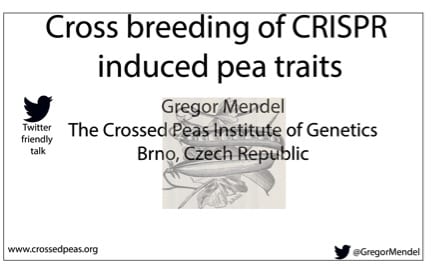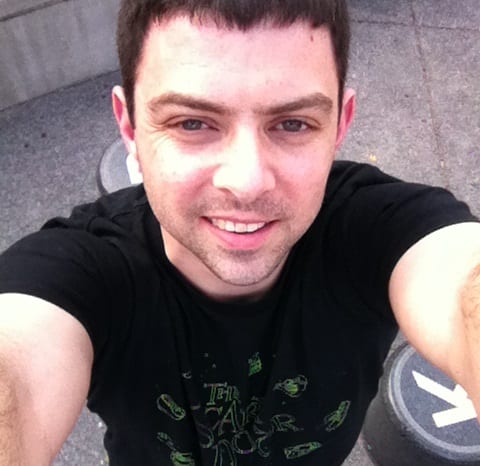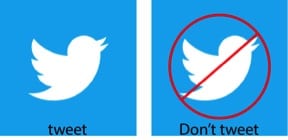Social media is revolutionizing the way scientists communicate and share their work. There are good reasons they are doing so, too.
Being on a service like Twitter enriches a conference experience. It's networking tool and a way to get your science noticed
It's exciting because the potential is there to better connect to scientists within and across disciplines, to connect to non-scientists/public audiences, and lead to real opportunities for scientists at every level.
Being on a service like Twitter enriches a conference experience. It's a sixth sense for sessions you can't attend, a networking tool, and a way to get your science noticed at the conference and beyond.
Using Twitter at conferences
There are some general rules to using Twitter at conferences. And there is some confusion amongst some scientific organizations about its use.
Speakers often don't give cues about acceptable content to broadcast in their talk. Given the ubiquity of Twitter and social media, it is incumbent on speakers to opt out of their talk being tweeted. However, until conference policies are clear and speakers acknowledge tweeters, it is up to individual tweeters to respect the speaker's content.
Here are lists of guidelines for tweeters and speakers to make the process of live-tweeting a positive one for all involved. Note that some of the suggestions in each list apply to everyone. For more suggestions you can read Mary Williams' (@PlantTeaching) two-part series on Twitter here.
A key rule for all on Twitter: Always be respectful and generally positive. Constructive criticism and questions are OK, ad hominem attacks and insults aren't.
Guidelines for live-tweeters
- Try to look up the speaker, links to papers, their website & twitter handle ahead of time, open them in a tab or have them in a digital note-taking app (e.g., Evernote) to tweet out just ahead of their talk.
- If a result is obviously published (i.e., a citation on the slide) or a slide is generic to a topic (e.g., background), consider it shareable.
- If possible, include a link to a paper or the speaker's website and include their Twitter handle if they have one (note: it can be easy to mistake a similarly named Twitter handle). At least use their full name in an initial tweet and their last name in subsequence tweets.
- Unpublished results (if unsure, err on the side of caution) are generally not tweetable. Exception: Speaker/presenter has given permission to tweet/photograph their whole talk/poster.
- If specific content is not tweetable, generic tweets like “Mendel is giving a great talk on breeding pea.†Another generic tweet example: “Speaker says publication is forthcoming in Awesome Journal XYZ soon.†Talk titles are public information published on the conference site/book, so that is shareable.
- If there are other live-tweeters in a session, re-tweet and interact with them during the talk; it helps convey the whole story of a talk, as different viewers will likely highlight different parts of a talk. And it's a great way to network.
- You don't have to tweet everything you see. Part of the idea is to give the twitter audience a sense of what a session is like and they can follow up if they like with you to clarify, or they can contact the speaker later. Take notes and be sure you're also engaged with the talk (tweeting can be a form of live note-taking).
- Include the hashtag for the conference in your tweets & replies to others if it's relevant to conference events. This helps others see and find your tweets. If your conference doesn't have a hashtag, ask the conference organizers to start one!
Suggestions for speakers
- Consider signing up for a Twitter account and placing your Twitter handle on at least your title slide. Indicate whether or not your entire talk can be broadcast (or if your slides will be found at slideshare, figshare, code at github, etc.). Even if you never tweet yourself, it opens a window into how people are reacting to your science and is another source of information on things you might be interested in. Also consider putting the url for your lab website, blog, or any relevant publications so tweeters can share it.

- If only parts of your talk can be tweeted, indicate shareable content by placing the twitter bird on the slide. You can also use the bird with a red line through it for slides that should not be tweeted.
- Check Twitter soon after your talk and interact with people tweeting about it that have tagged you. Address any questions they may have brought up and correct any misinformation/mishearing of what you said. Live tweeting can be fast-paced and though I do try to check and edit my tweets before posting, and be patient about tweeting them, errors can occur. This can be good feedback if you see a common misconception resulting from your talk; you may want to revise that part of it to be clearer if many people miss a point.
- Interaction on Twitter can lead to new opportunities. Twitter discussions can lead to collaborations, finding talented people to staff the lab, new ideas, or just a new interesting person to interact with or follow.
- It is OK to ask that your talk not be tweeted. Suggest you'd be happy to discuss it via email or other means.
- Consider tailoring your slides to make them more tweetable. Have a clear message for each slide, large typeface for figures, and a straightforward message not split across many slides. It will help avoid miscommunicating your science on social media.
- Publications shared on Twitter are more cited than those that aren't. Do consider sharing your publications via social media.
- I've heard a few speakers talk about live tweeting their own talk. Of course, while they're speaking, it's hard to tweet. There are services like buffer that allow pre-scheduling of tweets. Before your (well rehearsed) talk, you can slate tweets to publish as you're speaking and live tweeters can take them from there. There are also Python scripts out there that can schedule tweets as well.
Other considerations
Twitter is a two-way conversation. It's important to understand that if you ask a question or reply to something on Twitter, there is no guarantee the other person will reply and you're not entitled to a response from anyone. Follow up once, maybe twice, if it's that pressing, but stop after that. Engaging with others on Twitter is opt-in.
Final Thoughts
I hope I've convinced you that Twitter is worthwhile for many reasons. It's a great communications tool in our digital age, fostering important discussions of science across disciplines and with non-scientists. Remember that Twitter is a public platform and tweets are searchable. Be respectful and remember things you say are public and reflect back on you. It's up to you how open you want to be, but generally, I don't share my entire life on Twitter and am trying to be mostly professional, though pictures of my cat do often make it onto the internet. I hope to see some readers on social media in the future.
About the Author
 Ian Street is a postdoc in the Schaller lab at Dartmouth College studying plant hormone interactions in root development. He writes about plant science at his blog, The Quiet Branches. He also co-moderates The Diversity Journal Club on Twitter. You can find him on Twitter @IHStreet. In his downtime, Ian is a runner, reader of too many things on the Internet, and a cat owner. Ian Street is a postdoc in the Schaller lab at Dartmouth College studying plant hormone interactions in root development. He writes about plant science at his blog, The Quiet Branches. He also co-moderates The Diversity Journal Club on Twitter. You can find him on Twitter @IHStreet. In his downtime, Ian is a runner, reader of too many things on the Internet, and a cat owner. |
About the Author
- athenssciencecafehttps://athensscienceobserver.com/author/athenssciencecafe/April 17, 2020
- athenssciencecafehttps://athensscienceobserver.com/author/athenssciencecafe/April 12, 2020
- athenssciencecafehttps://athensscienceobserver.com/author/athenssciencecafe/April 3, 2020
- athenssciencecafehttps://athensscienceobserver.com/author/athenssciencecafe/March 30, 2020








